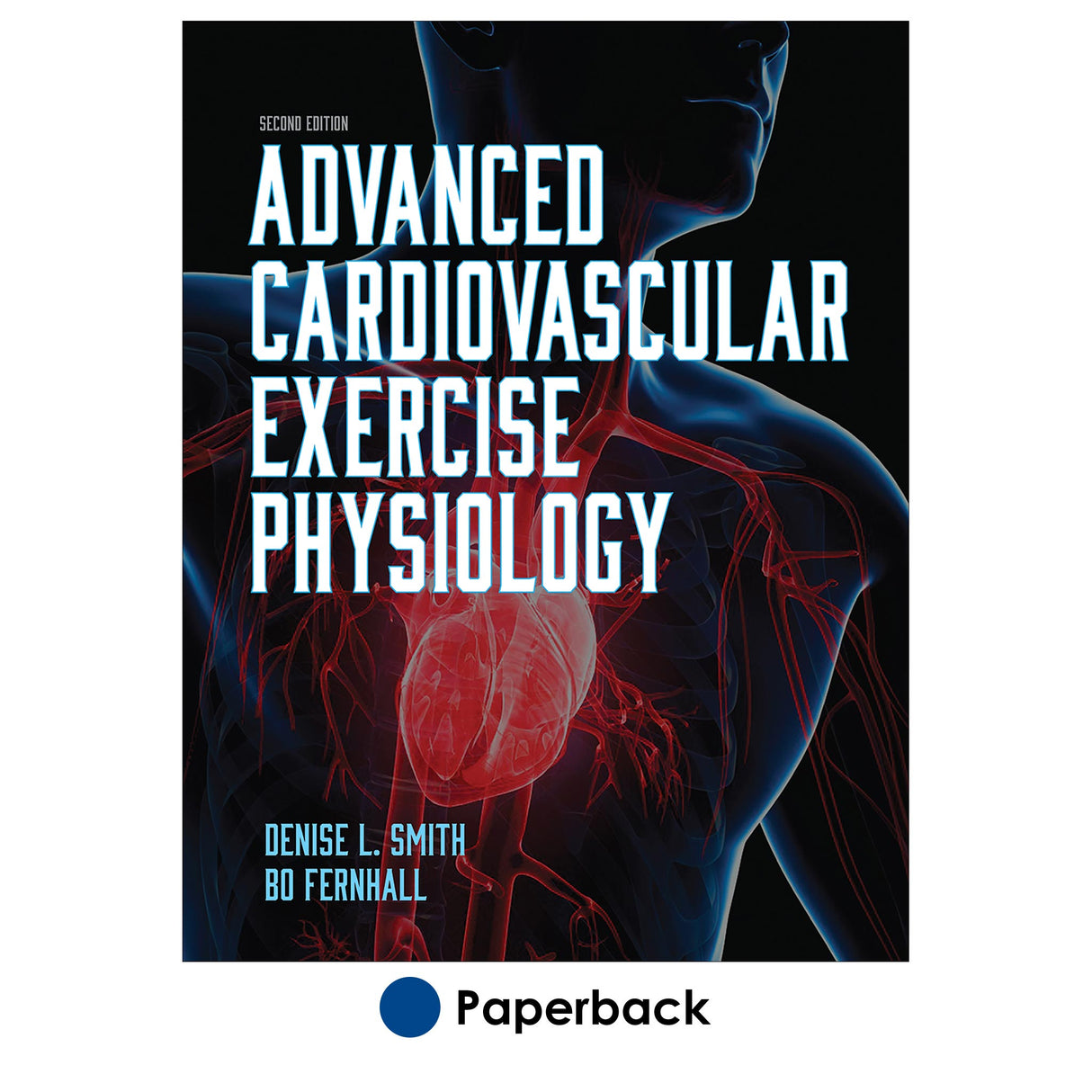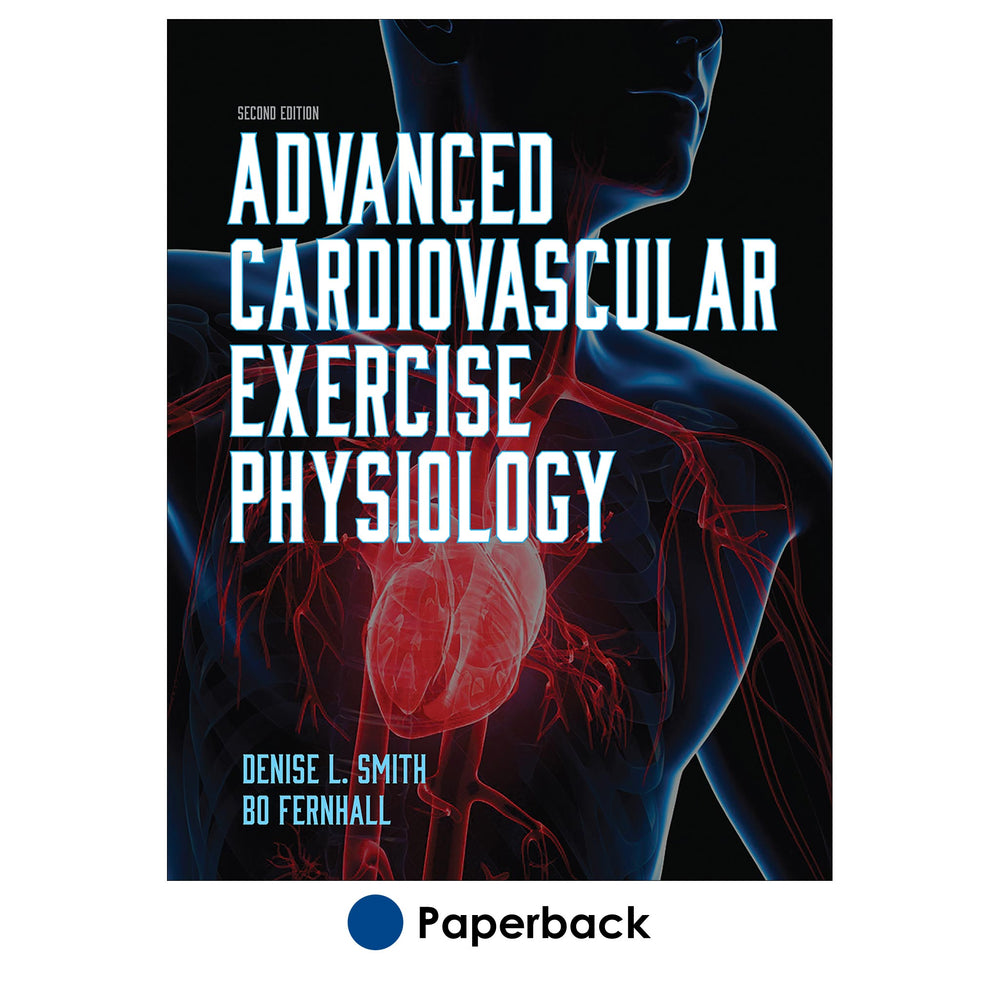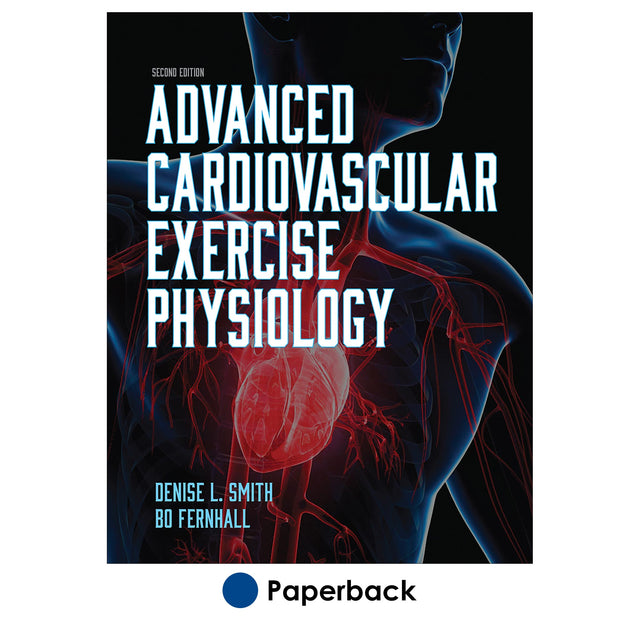Advanced Cardiovascular Exercise Physiology-2nd Edition
Author: Denise L. Smith, Bo Fernhall
$119.00 USD
Advanced Cardiovascular Exercise Physiology, Second Edition, highlights the complex interaction of the components of the cardiovascular system, both at rest and during exercise. Using the latest scientific and medical research, this text presents an engaging discussion of cardiovascular responses and adaptions to both aerobic and resistance exercise training, and it offers readers possible future directions for research. Specific attention is paid to the beneficial effects of exercise and the mechanisms through which regular exercise promotes cardioprotection. The second edition incorporates new topics and expanded information on the following:
- Ventricular hypertrophy
- Central blood pressure and its measurement
- Pathophysiology of arterial stiffness and relevant measurement techniques
- Blood pressure during exercise and its clinical importance
- The effects of prolonged acute exercise on cardiac arterial and hemostatic function
- Endothelial function, including the impact of aging and sex, and potential mechanisms
- An individual’s response and adaptation to both resistance training and aerobic training
This text is divided into two sections. The first section offers a concise explanation of the structure and function of each component of the cardiovascular system. In the second section, readers encounter a detailed discussion of the acute and chronic effects of aerobic and resistance exercise on cardiac function, vascular function, and hemostatic variables.
Advanced Cardiovascular Exercise Physiology, Second Edition, provides a framework for understanding how the components of the cardiovascular system cooperate to support exercise and how those components adapt to and benefit from a systematic program of exercise training.
Audience
Text for graduate or advanced undergraduate exercise physiology courses studying the effects of exercise on the cardiovascular system. Reference for researchers, exercise and sports medicine specialists, health care professionals, and clinicians.Chapter 1. Essentials of the Cardiovascular System
Components of the Cardiovascular System
Cardiovascular Responses to Exercise
Summary
Chapter 2. The Heart as a Pump
Gross Anatomy of the Heart
Cardiac Cycle
The Ventricular Pressure–Volume Loop
Cardiac Output
Distribution of Cardiac Output
Coronary Blood Supply
Measuring Cardiac Function
Summary
Chapter 3. Cardiac Myocytes
Microscopic Anatomy of Cardiac Myocytes
Excitation–Contraction Coupling
Mechanisms of Contraction
Metabolic Requirements
Summary
Chapter 4. Electrical Activity of the Heart
Ion Basis of Electrical Activity
Resting Membrane Potential
Action Potential
Conduction System of the Heart
Autorhythmicity of Conduction Cells
Pacemakers of the Heart
Control of Heart Rate
Brain- and Receptor-Mediated Heart Rate Control Mechanisms
Heart Rate Variability
Summary
Chapter 5. The Electrocardiogram
The ECG Tracing
Measuring the ECG
Measuring Heart Rate
Cardiac Rhythms
Conduction Blocks
Ventricular Hypertrophy
ST-Segment Changes (Ischemia)
Myocardial Infarction
Test Considerations
Common ECG Changes in Athletes
Summary
Chapter 6. Hemodynamics and Peripheral Circulation
The Pressure Differential
Flow Velocity
Poiseuille’s Law
Blood Flow
Arterial Blood Pressure
Pulse Waves and Wave Reflections
Blood Pressure Measurement
Control of Vasoconstriction and Vasodilation
Reflex Control of Blood Pressure and Vasomotion
Measurement of Blood Pressure and Pulse Wave Analysis
Summary
Chapter 7. Vascular Structure and Function
Structure of Blood Vessels
Vascular Network
Endothelium
Endothelium Regulation of Vascular Tone
Vascular Smooth Muscle
Measuring Endothelial and Vascular Function
Summary
Chapter 8. Hemostasis: Coagulation and Fibrinolysis
Vascular Injury
Platelets
Coagulation
Fibrinolysis—Clot Dissolution
Assessing Hemostasis
Summary
Section II. Exercise Physiology
Chapter 9. Cardiovascular Responses to Acute Aerobic Exercise
Cardiac Responses
Vascular Response
Hemostatic Responses
Summary
Chapter 10. Cardiovascular Adaptations to Aerobic Training
Cardiac Dimensions
Cardiac Function
Vascular Adaptations
Hemostatic Adaptations
Summary
Chapter 11. Cardiovascular Responses to Acute Resistance Exercise
Cardiac Responses
Vascular Responses
Hemostatic Responses
Summary
Chapter 12. Cardiovascular Adaptations to Resistance Training
Cardiac Adaptations
Vascular Function
Hemostatic Adaptations With Resistance Training
Summary
Microscopic anatomy of cardiac myocytes
What is endothelial function?
All ancillaries are free to adopting instructors through HKPropel.
Case study answers. Features questions for the 15 case studies presented in the book, along with sample answers.
Test package. Contains questions in true-false, fill-in-the-blank, essay and short-answer, and multiple-choice formats. The files may be downloaded for integration with a learning management system or printed for use as paper-based tests.
Image bank. Includes the figures and tables from the text, sorted by chapter. These can be used in developing a customized presentation based on specific course requirements.





